Review: LG Voyager
One of the Voyager's many appealing characteristics is its elegant styling. (We're not going to be able to avoid the "i" word here, but we'll try to keep it to a minimum.) Yes, it does sort of resemble an iPhone if you put them next to one another. Even if imitation is the sincerest form of flattery, the Voyager does have many traits that set it far apart from the iPhone.
First and foremost are its bulk. It is 1/4 inch thicker than the iPhone, and this makes a bigger bulge in your pocket. It is narrower by about 1/4 inch, and stands at about the same height. They are practically the same weight. This means it is not a small phone. In fact, it is fairly large by today's standards. But in some instances bigger is better. It has a solid heft to it when you hold it in your hand, and wrapping your fingers around it isn't uncomfortable despite its size. The back of the phone has a nice textured paint job to it that give a bit of grip, which will prevent it from slipping out of your hand.
On the front, the large touch screen is set in a black frame that is ringed in silver color. There are only three buttons on the front of the phone, and two of them (send/end) are hidden in the dimple-textured plastic. The area for the send/end keys is quite large, though. Pressing your finger anywhere along the bottom of the phone is going to activate one or the other. The Clear key is set apart between the send/end keys. All three have good action and feedback. Because they are placed at the very bottom of the phone, however, they can be awkward to reach with your thumb, depending on how you are holding the phone.
There are three keys along the left side of the Voyager. The top most is the camera key. With the phone unlocked, it will launch the camera and also serve as the shutter release button. Just as on the enV, the top half of the phone does get in the way a little bit, and if you are fat fingered, you may have trouble finding the button. Below that key is a spring-loaded lock key. Sliding this key locks or unlocks the touch screen. This slide has ridges, so it is easier to catch with your finger, but it is fairly small. Last is the volume toggle / camera zoom key. It is also fairly small, but is still easily found and used. Feedback was kept to a minimum, but it was enough to let you know the key had been used.
The right side of the phone has just the cover for the microSD slot and 2.5mm headset hack. The microSD slot was easy enough to open, but we're disappointed that the Voyager does not have a standard-sized headset jack. For a phone with such powerful media capabilities, this seems to be a questionable choice for LG.
The power port and TV antenna are located on the bottom of the phone. The TV antenna is very thin. It pulls out about 5 inches to provide for better V CAST TV reception. When fully open, it has a 90-degree hinge so it doesn't just stick out straight from the bottom of the phone and can be aimed upwards or wherever you might experience the best signal. We worry about the longevity this antenna will experience. It could easily be bent or broken. Users should exercise care when fiddling with it.
When opened up, it is much more difficult to tell the Voyager apart from the enV. The internal screen is slightly larger, but the overall design is nearly identical. The screen is flanked by stereo speakers, and there is a full QWERTY keyboard for composing messages and inputting other data.
Opening the Voyager is easily done with either hand. There is no spring preventing it from opening, though it does lock itself into the open position at about 60 degrees so that it doesn't flap around. There's a tiny bit of resistance upon closing it, but it doesn't get in the way. The top part of the phone can be pushed open a full 180 degrees to help framing pictures, though I found when using it like this, it was very easy to accidentally cover the lens with the fingers on your right hand.
Holding it in your hand open is fairly comfortable. The textured paint job is extended into the trim around the keyboard, and this helps you maintain your grip on it. Our gripe list with this layout, however, is the same as with the enV.
While navigating menus from the front of the phone was easy, it was less so when the phone is open. The D-pad is on the extreme right side of the wide keypad very close to the edge of the phone, and your thumb has to bend at a very tight angle (i.e., 90 degrees) to be able to hit the pad directly below it. My thumb suffered from cramps very quickly using the D-pad. The send/end keys are above the D-pad and the speakerphone key and clear key are directly beneath it. As with the enV, I found myself hitting the speakerphone key rather than the clear key, which is to its left. This layout seems slightly awkward and had me turning the speakerphone on and off constantly. What's even stranger is why the speakerphone key is there at all. For some reason, the phone doesn't automatically switch to speakerphone when opened. It should.
The QWERTY keyboard itself was fairly satisfying to use. The keys are spread out and big enough so that you don't run the risk of accidentally punching the wrong key. Each key has a nice little click to let you know that you've pressed it. The placement of the the two space keys also took some getting used to, as they are on the far bottom right and left of the keyboard, rather than in the middle where the space bar normally falls. Gone is the dedicated email key in the upper left hand corner of the keyboard.
Above the keyboard are the two function keys. They may be right above the keyboard, but for some reason they feel like they are a million miles away. Reaching up to hit them just didn't feel natural, and was a stretch.


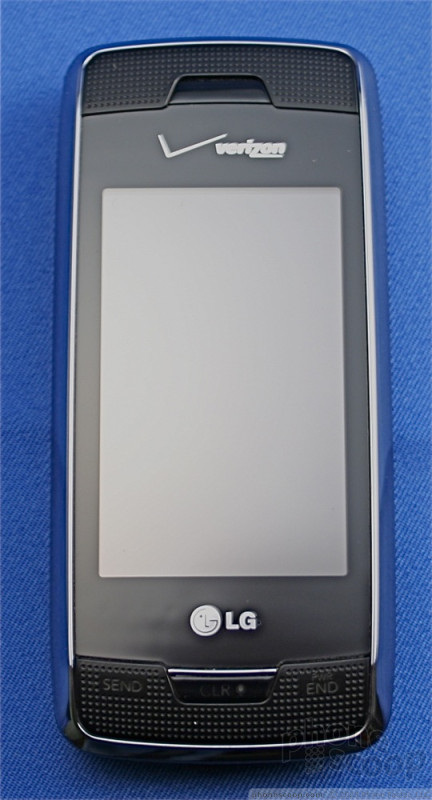









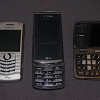 Verizon Holiday Phones
Verizon Holiday Phones
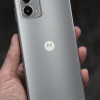 Hands On with the 2023 moto g 5G & moto g stylus
Hands On with the 2023 moto g 5G & moto g stylus
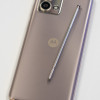 Hands On with the moto g stylus 5G (2023)
Hands On with the moto g stylus 5G (2023)
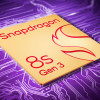 Qualcomm Expands Snapdragon 8 Series to Cover More Price Points
Qualcomm Expands Snapdragon 8 Series to Cover More Price Points
 How To Take a Screenshot on Android
How To Take a Screenshot on Android
 LG Voyager VX-10000
LG Voyager VX-10000

